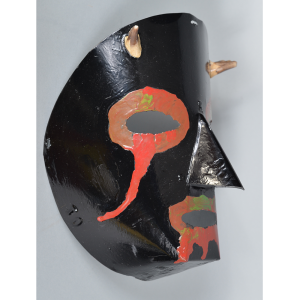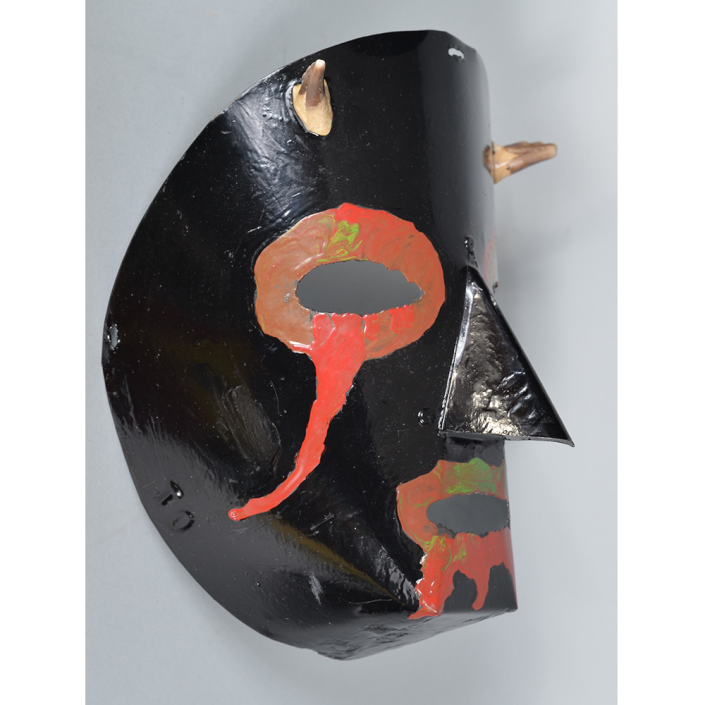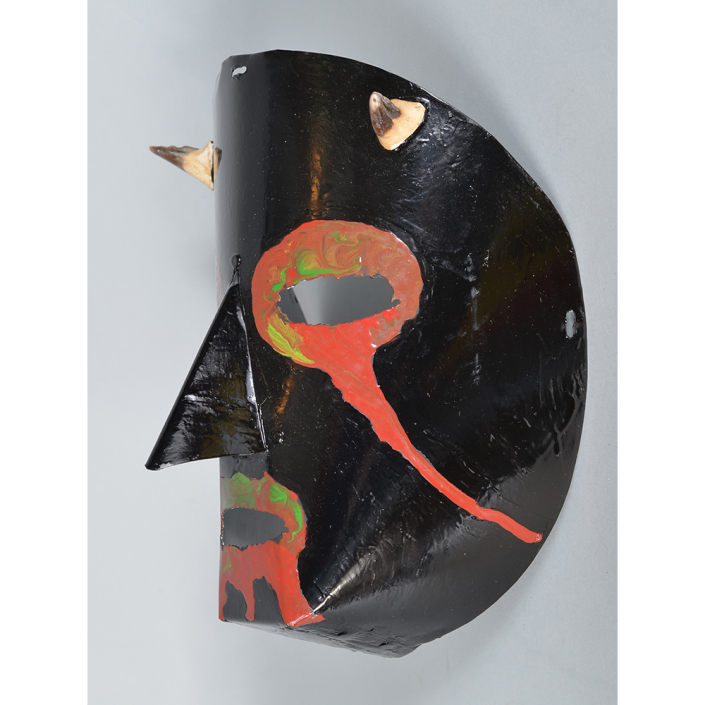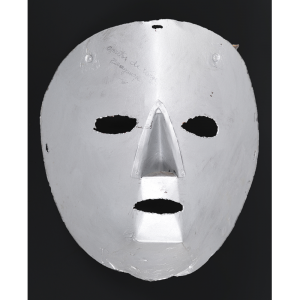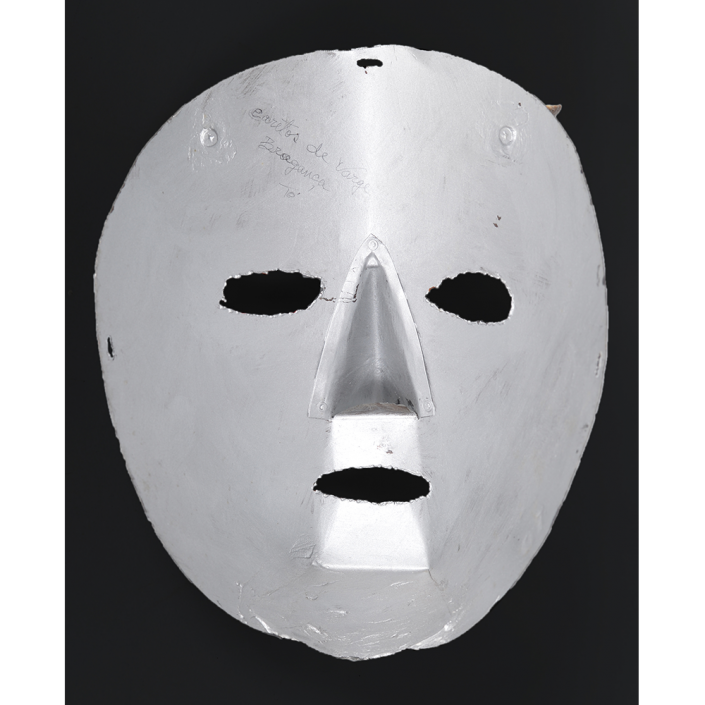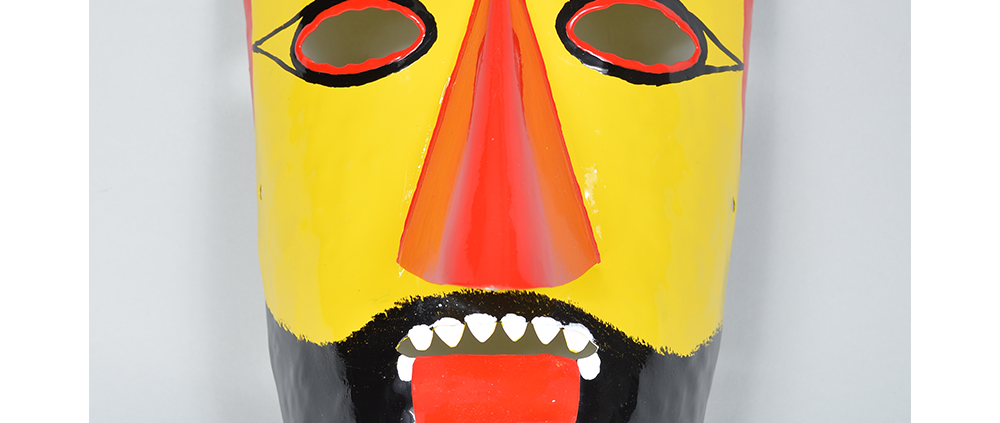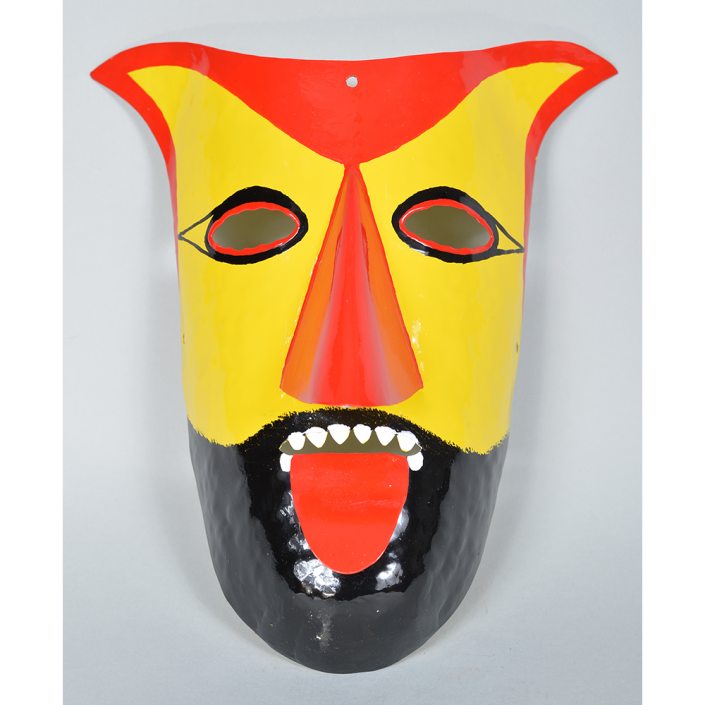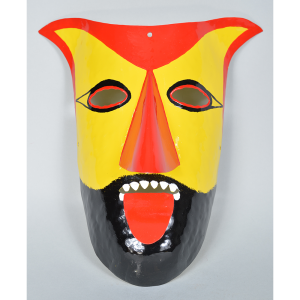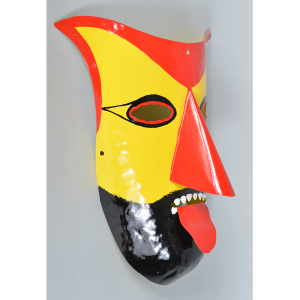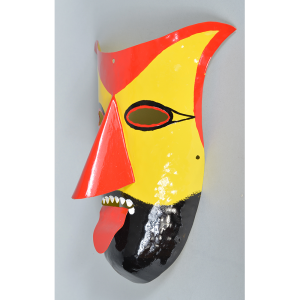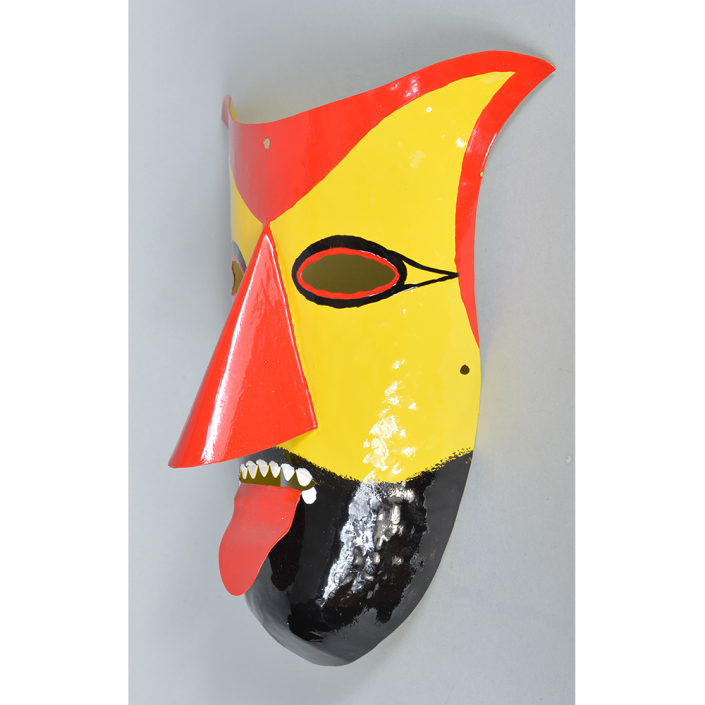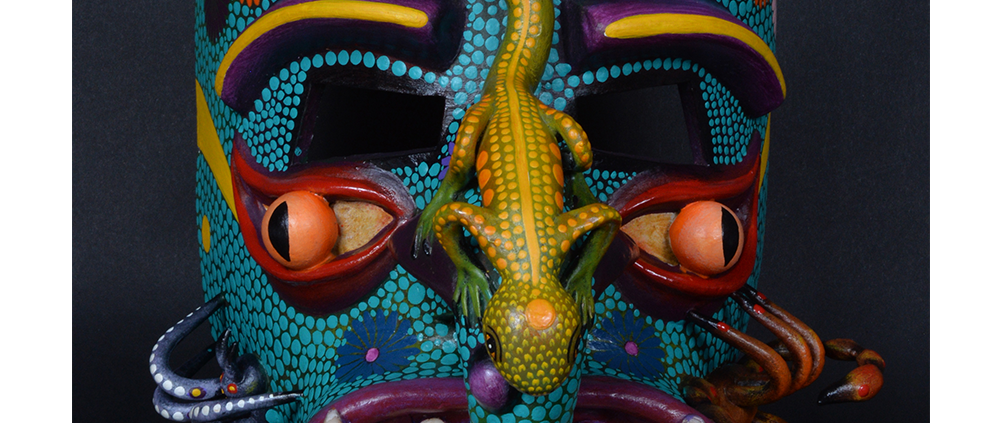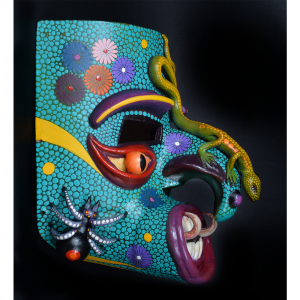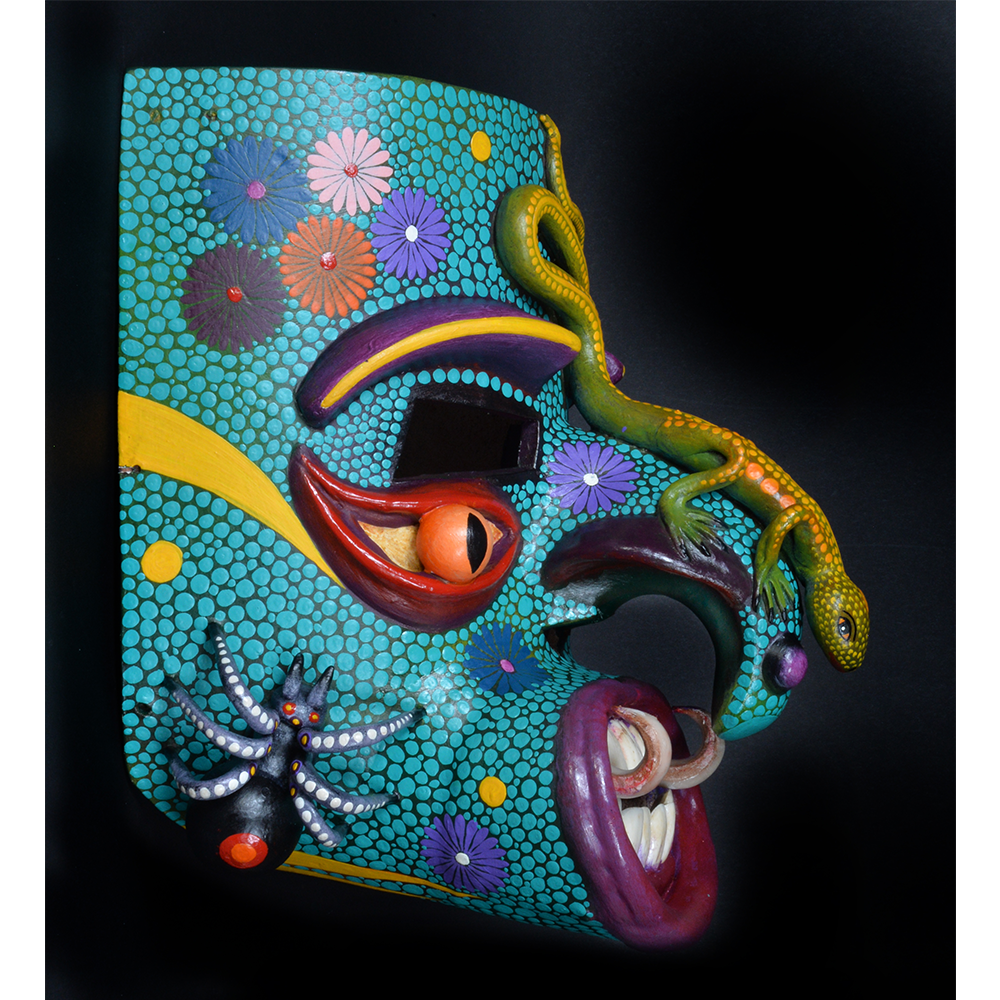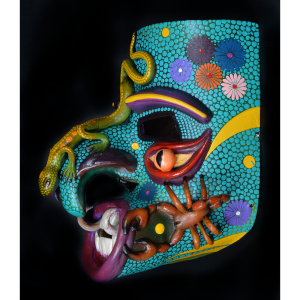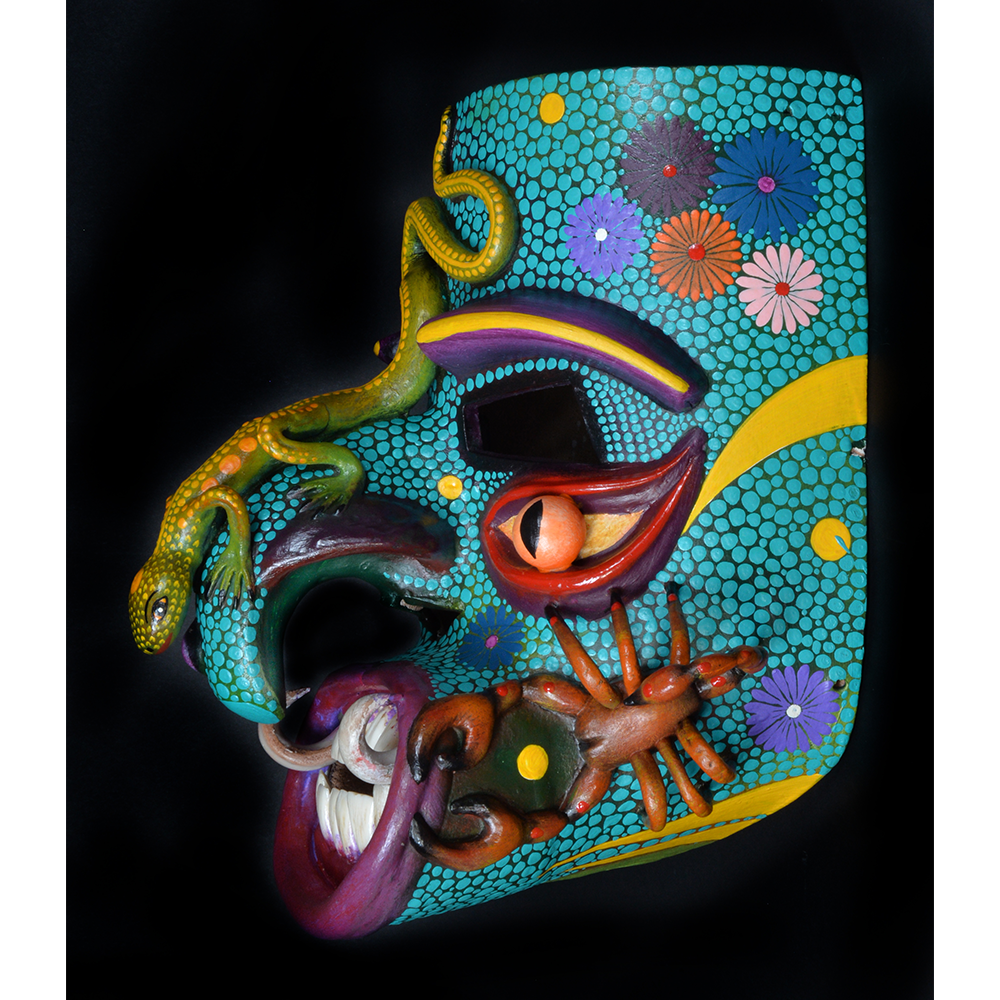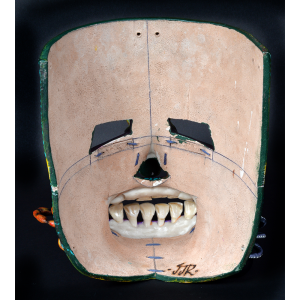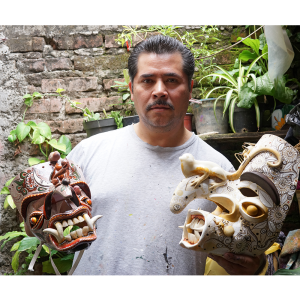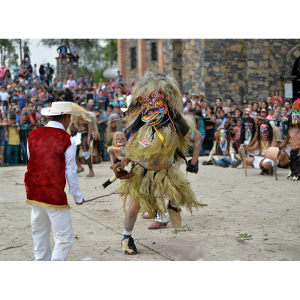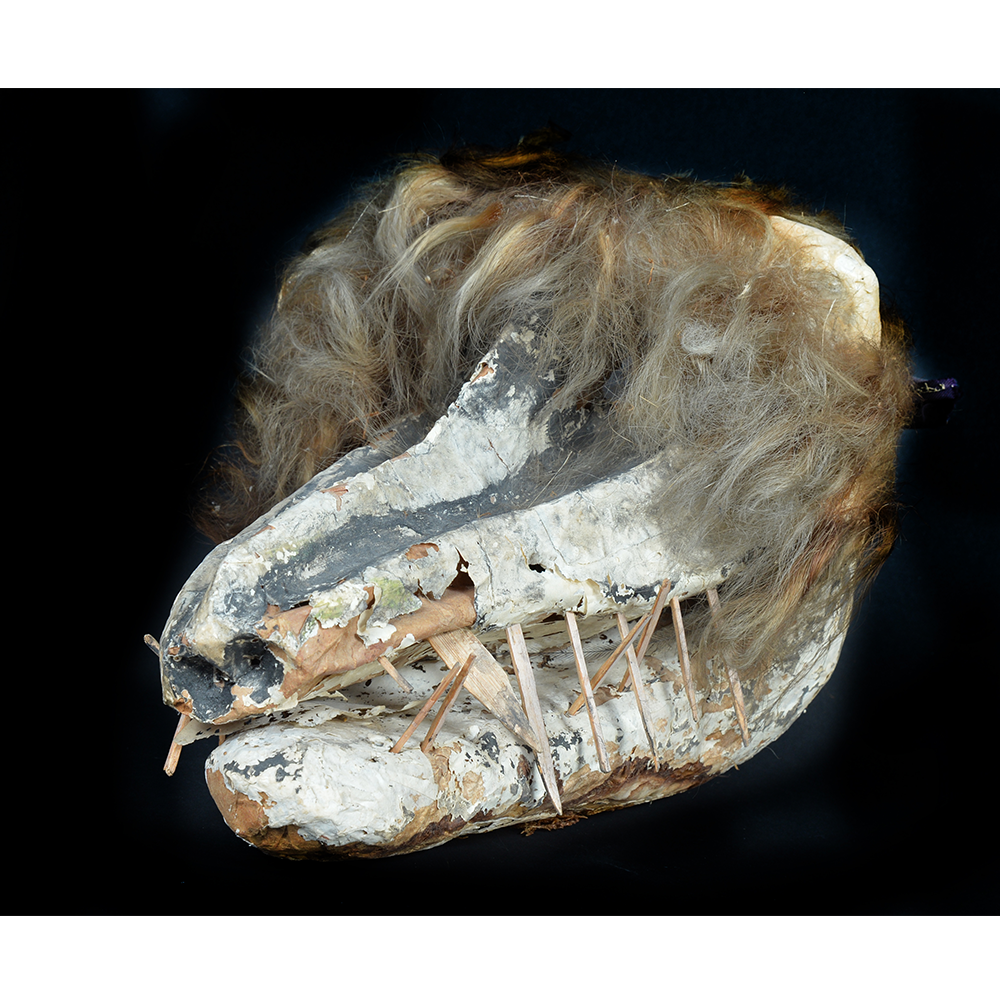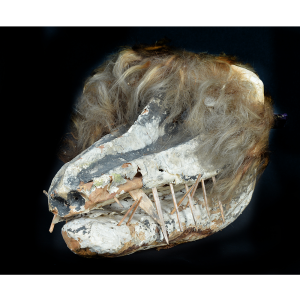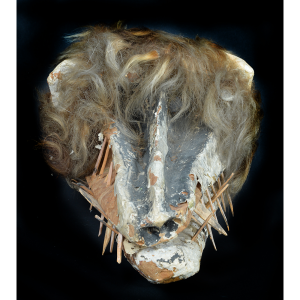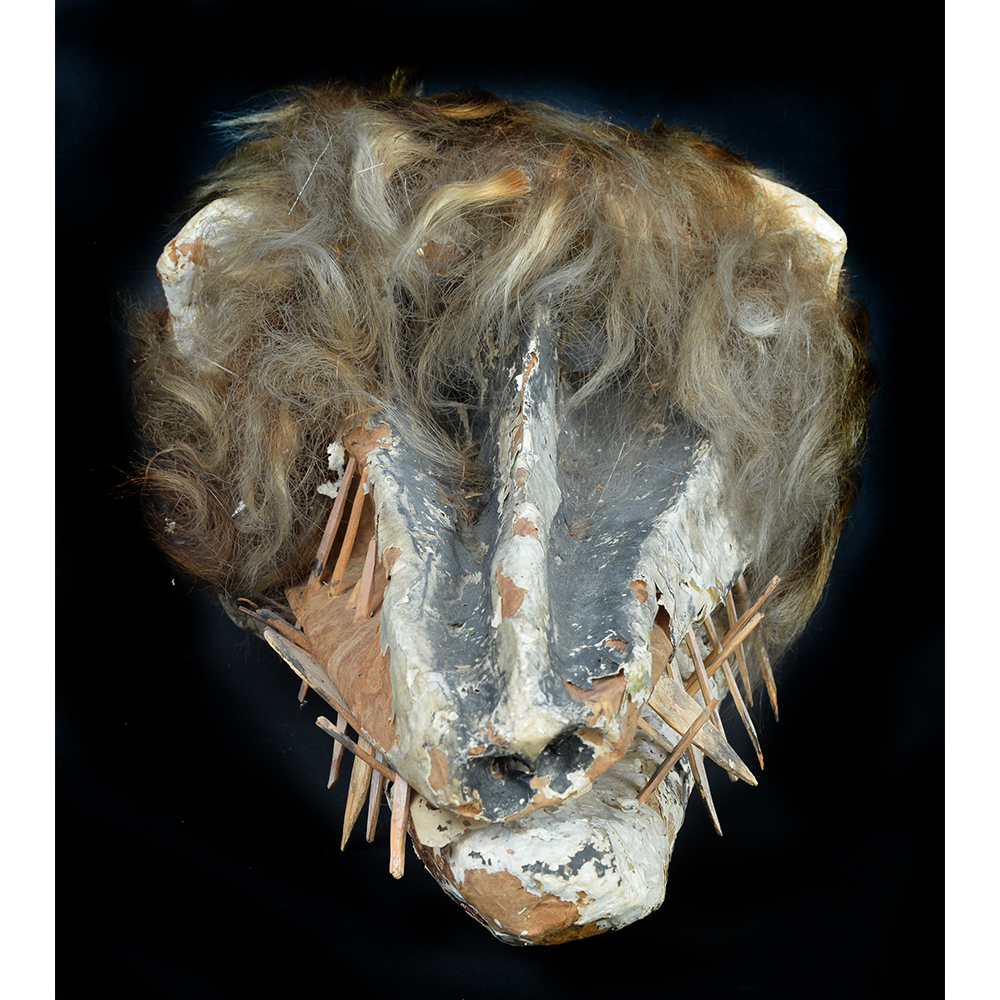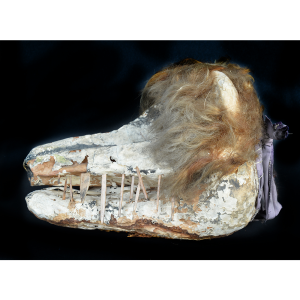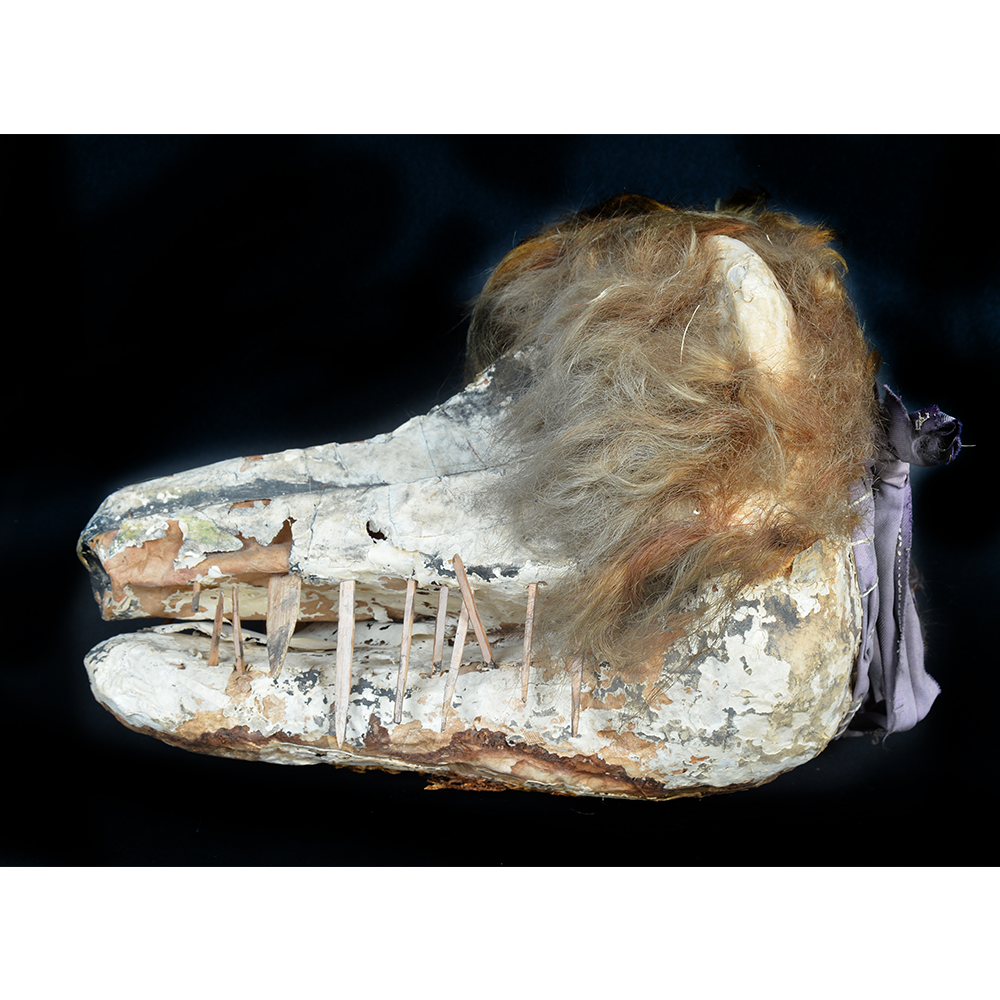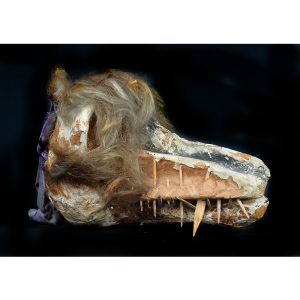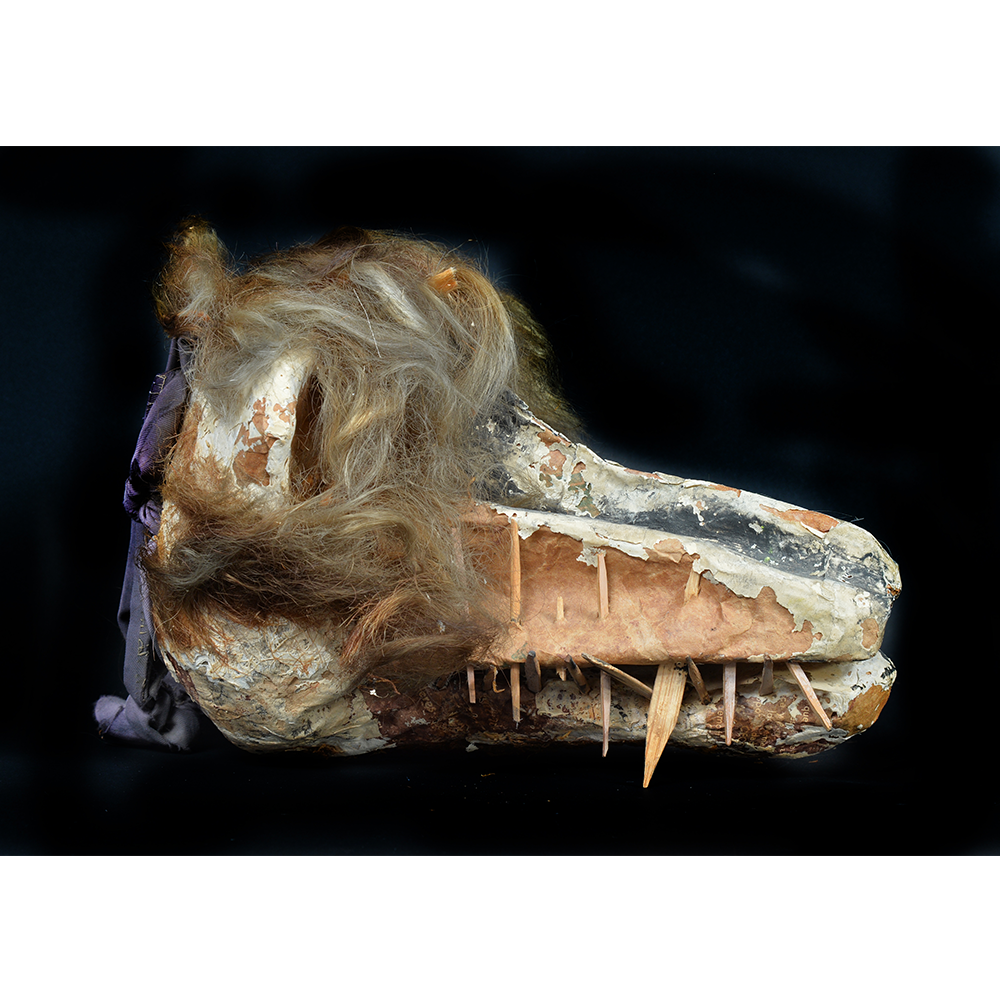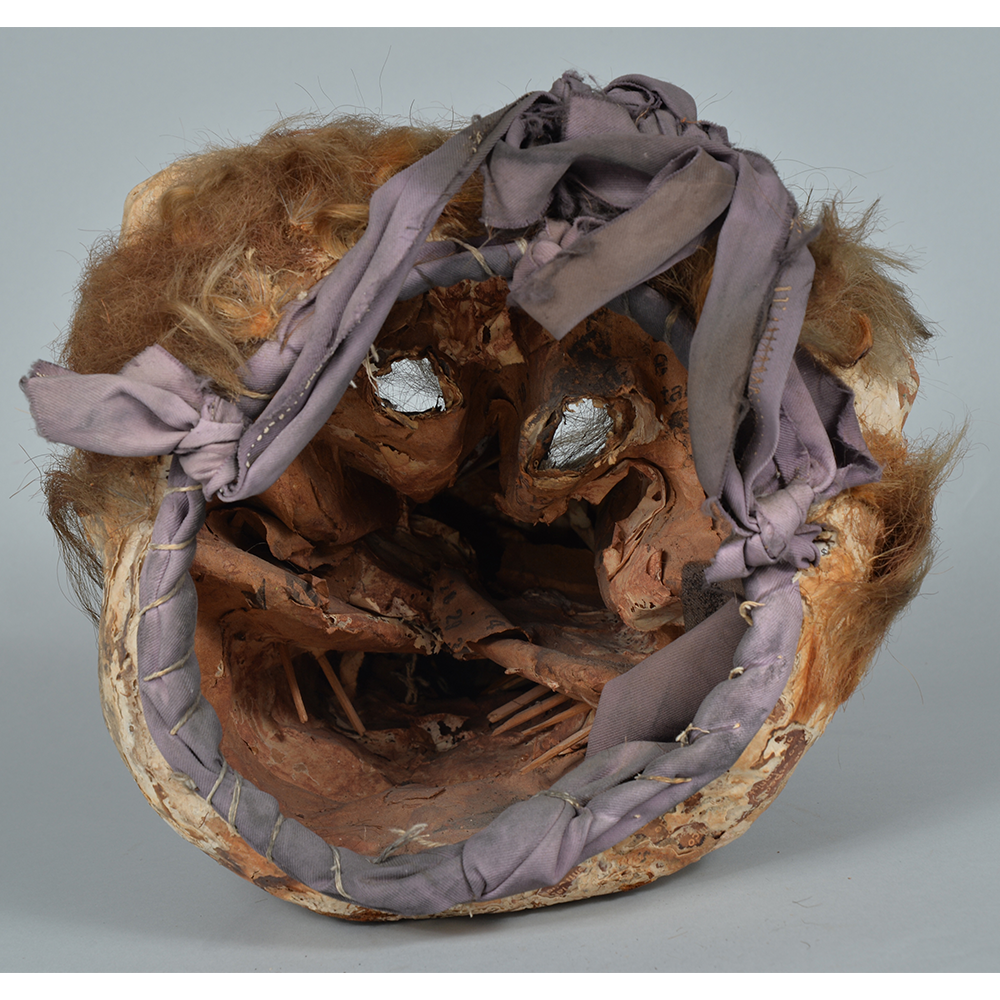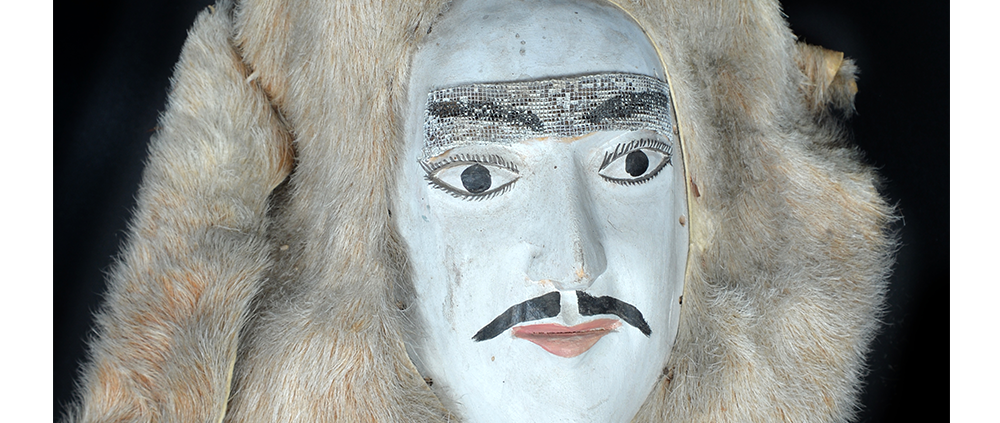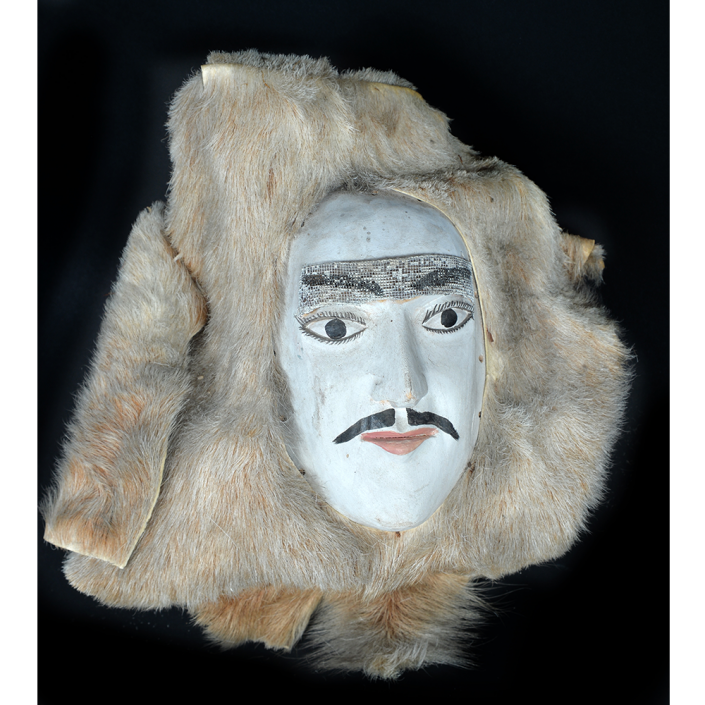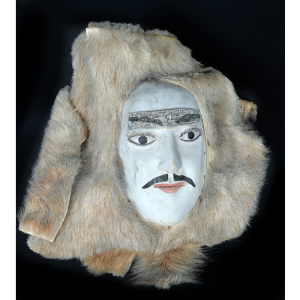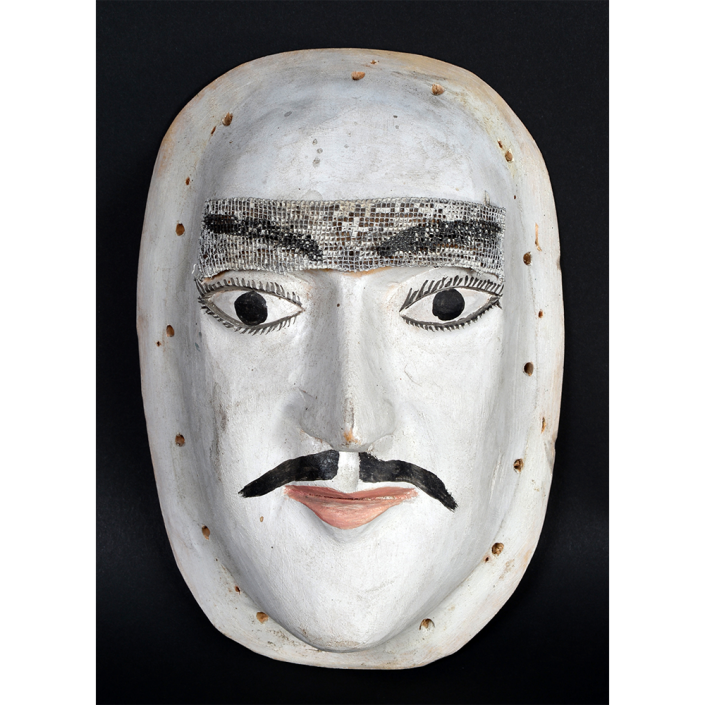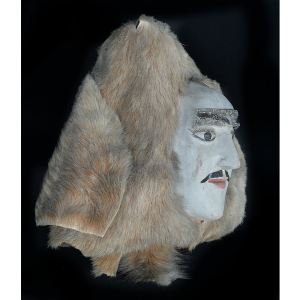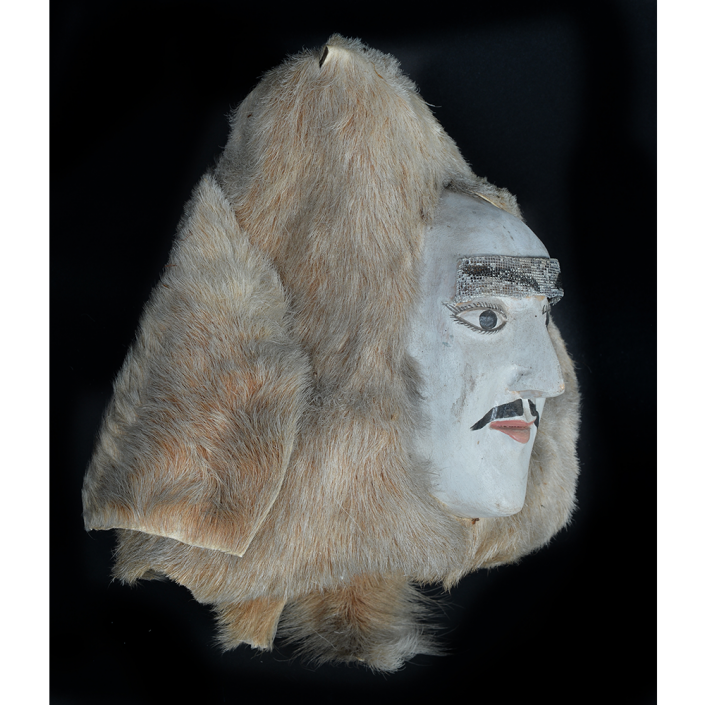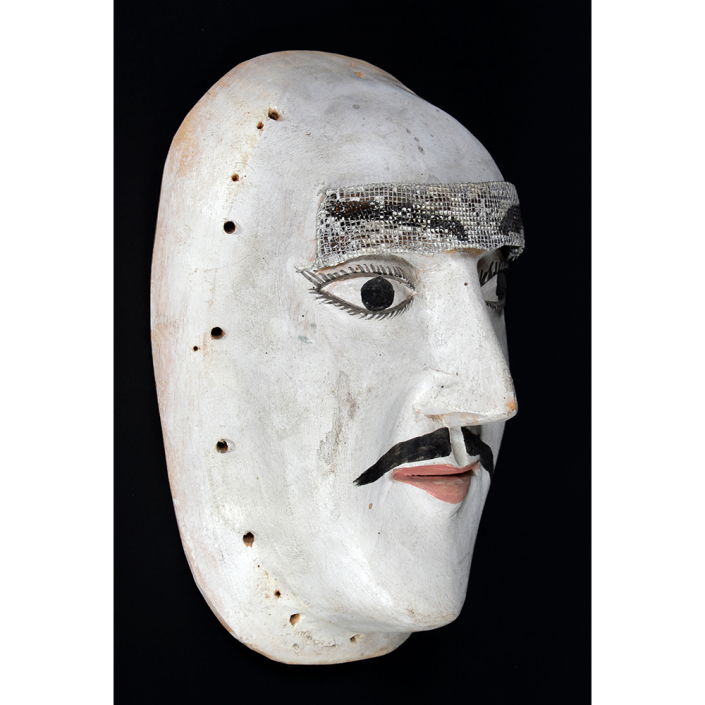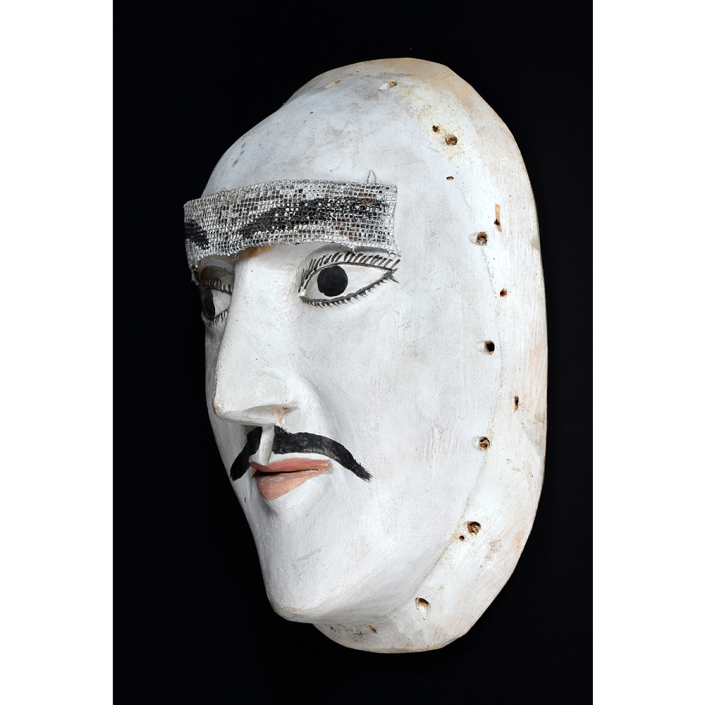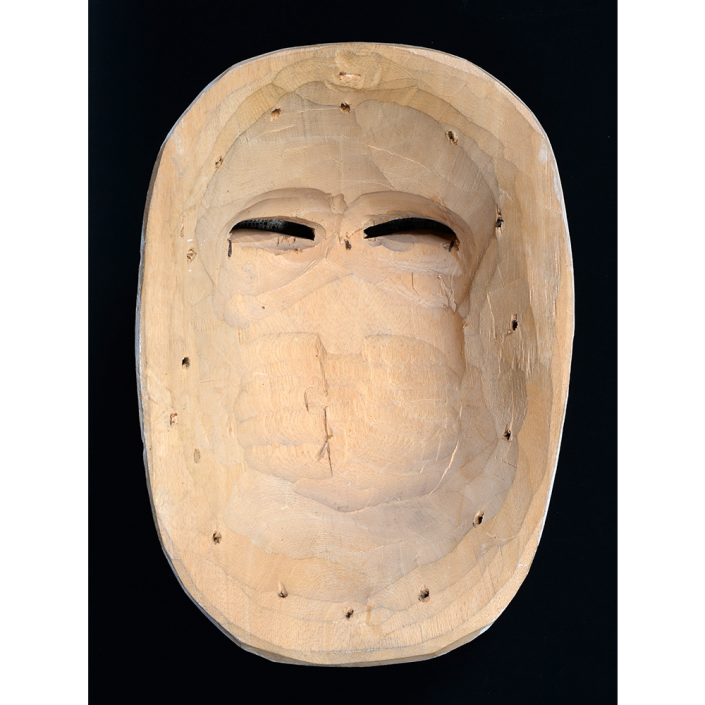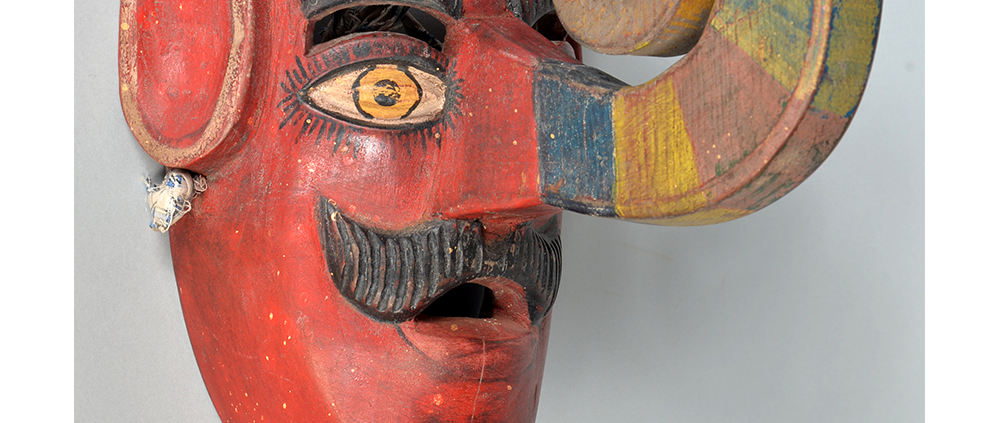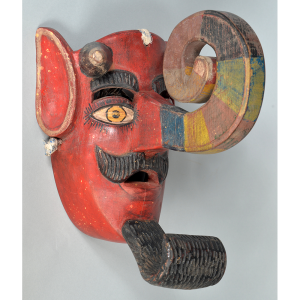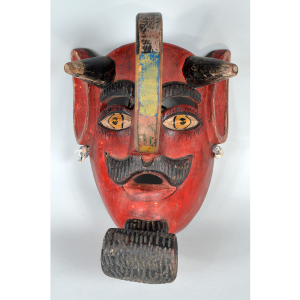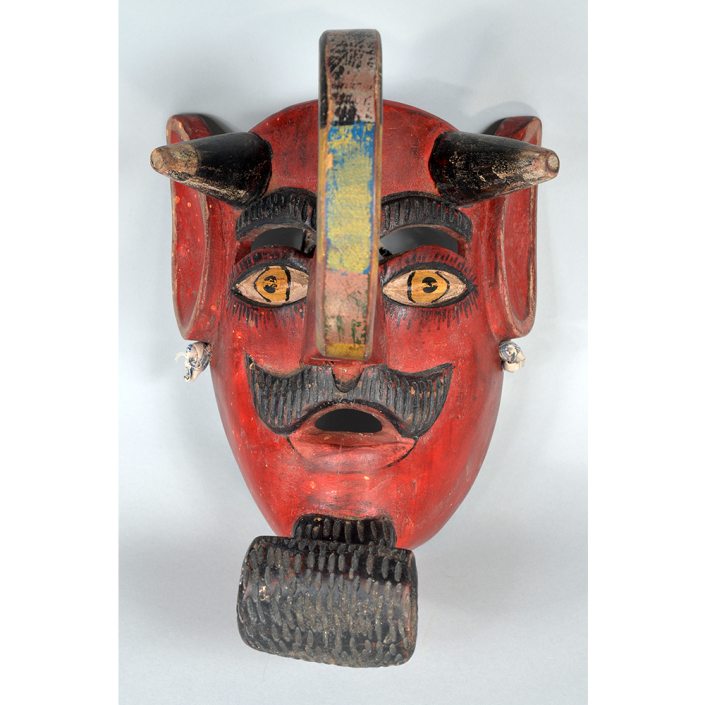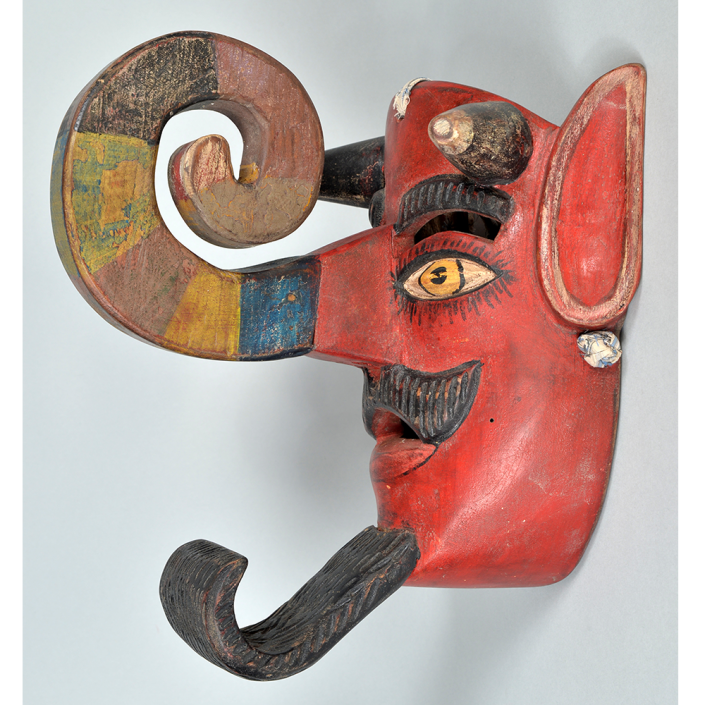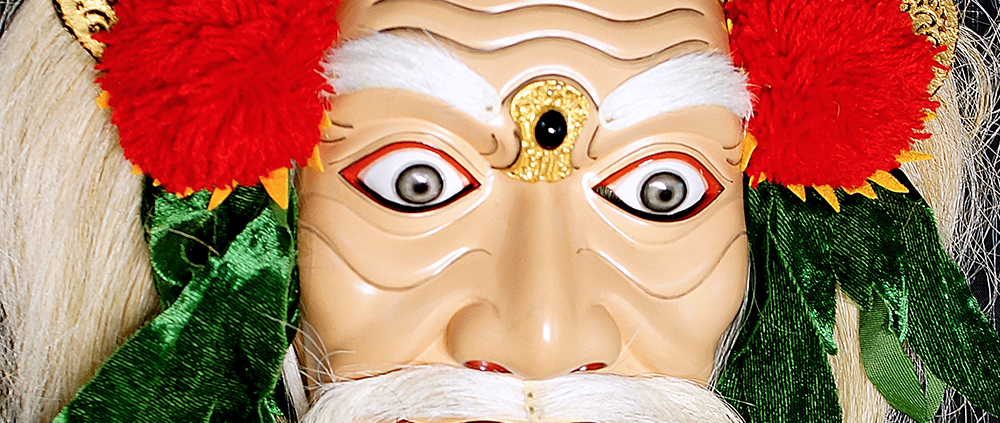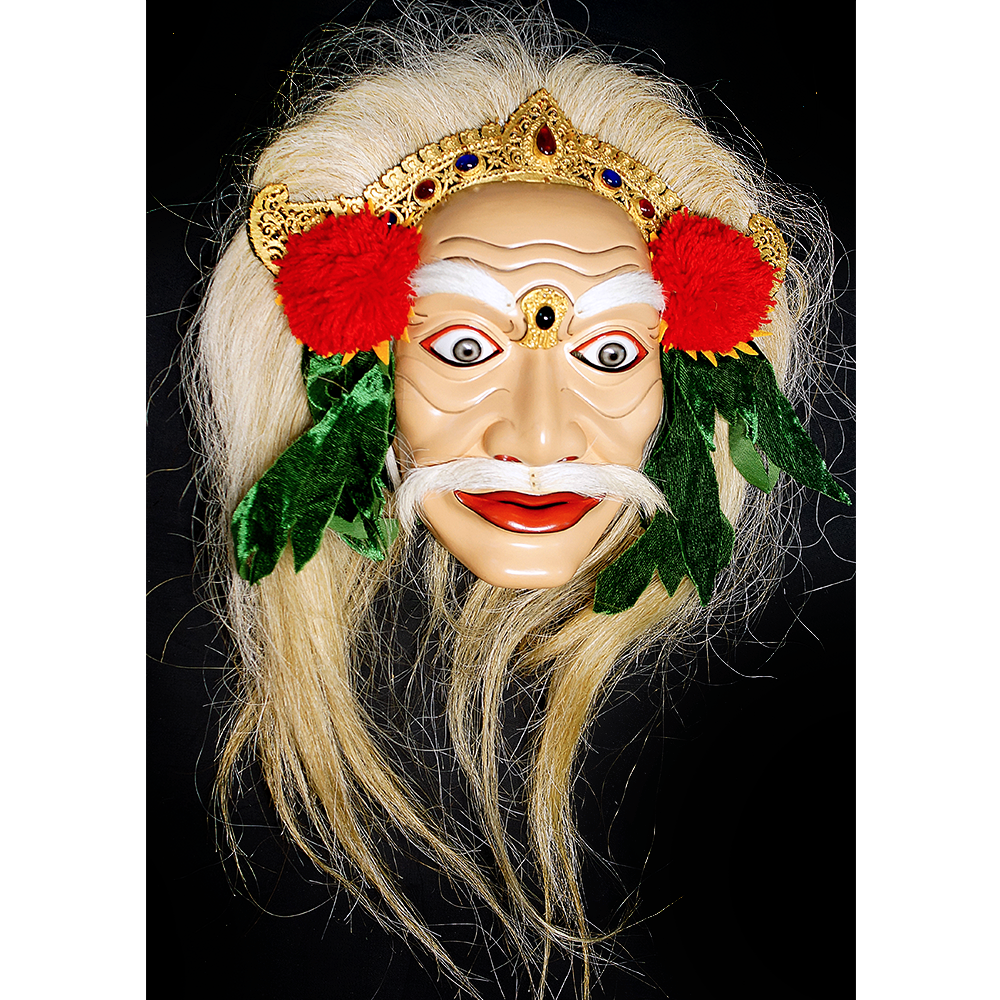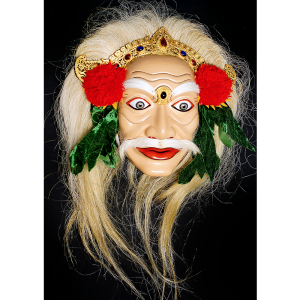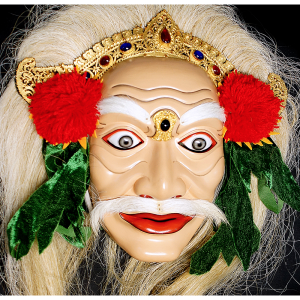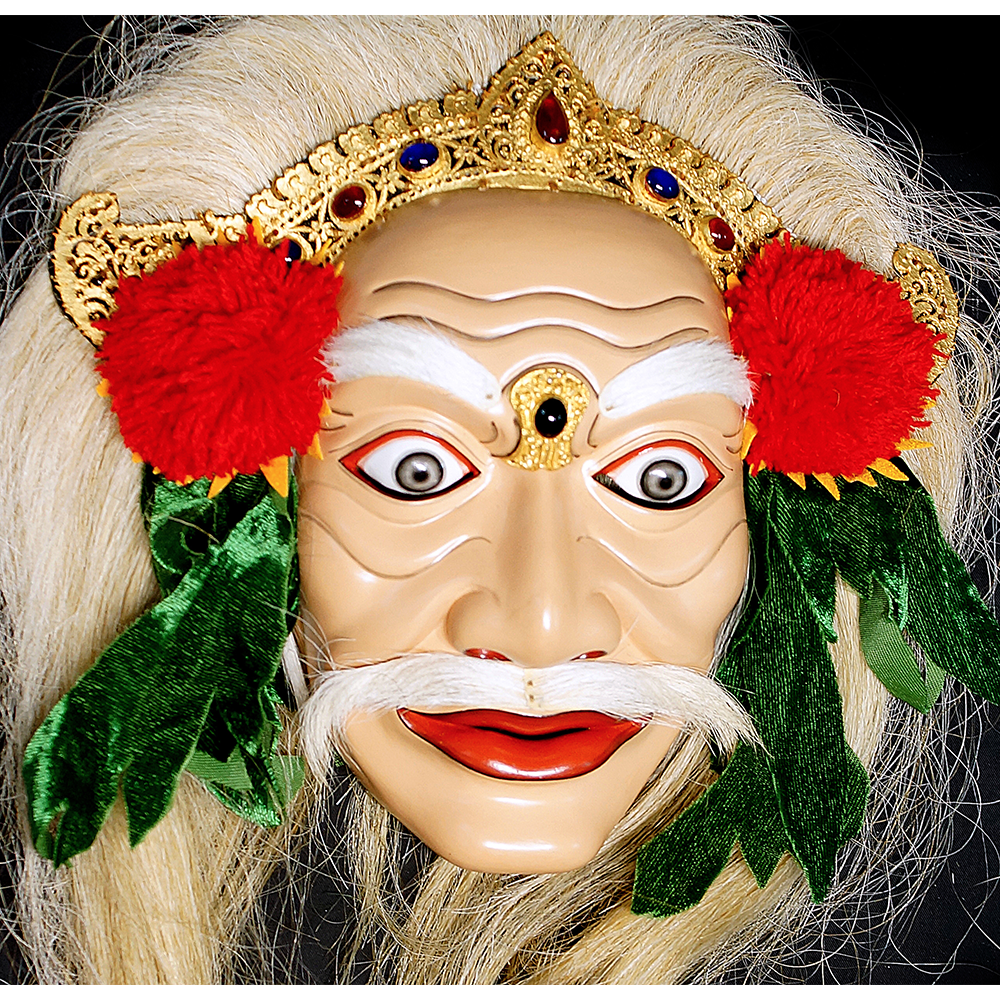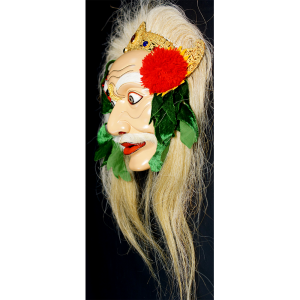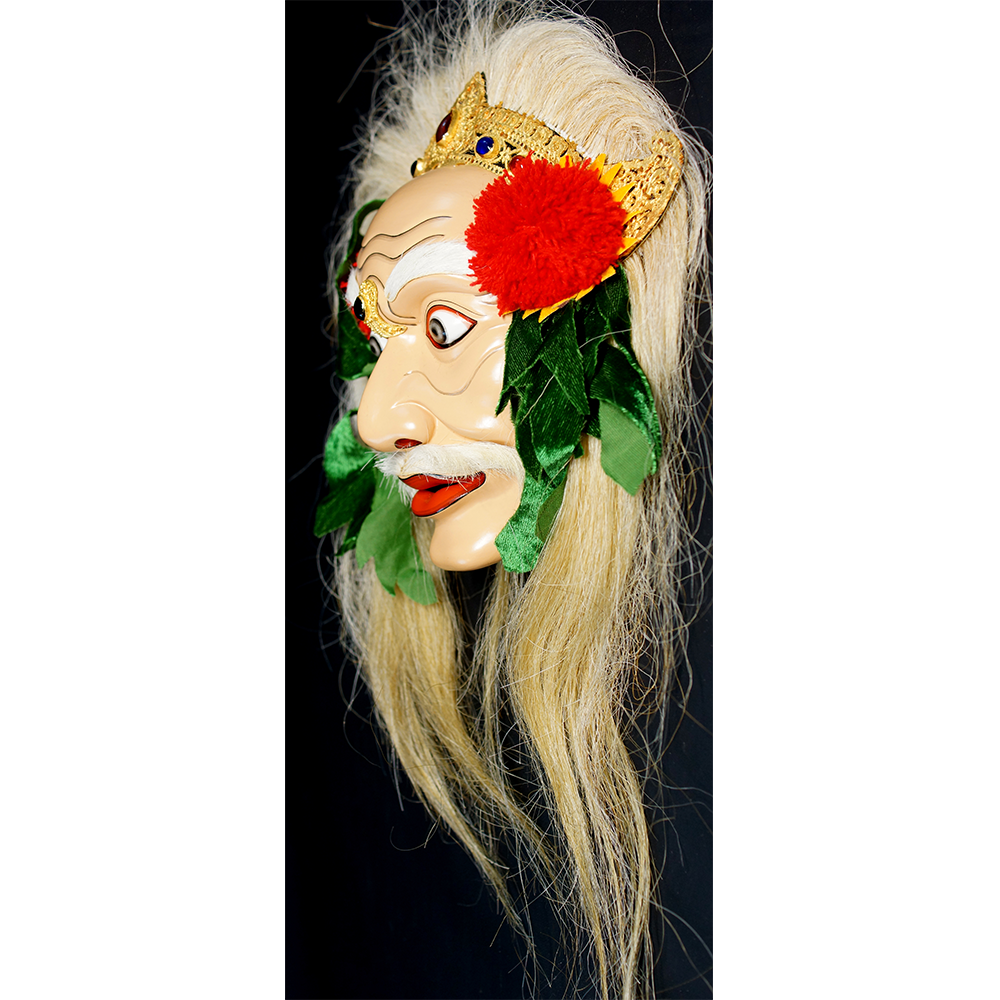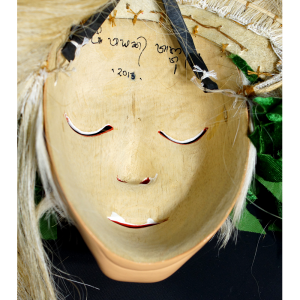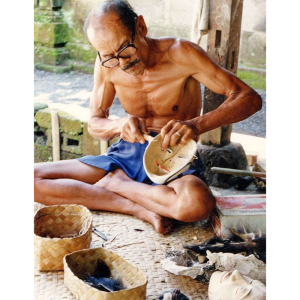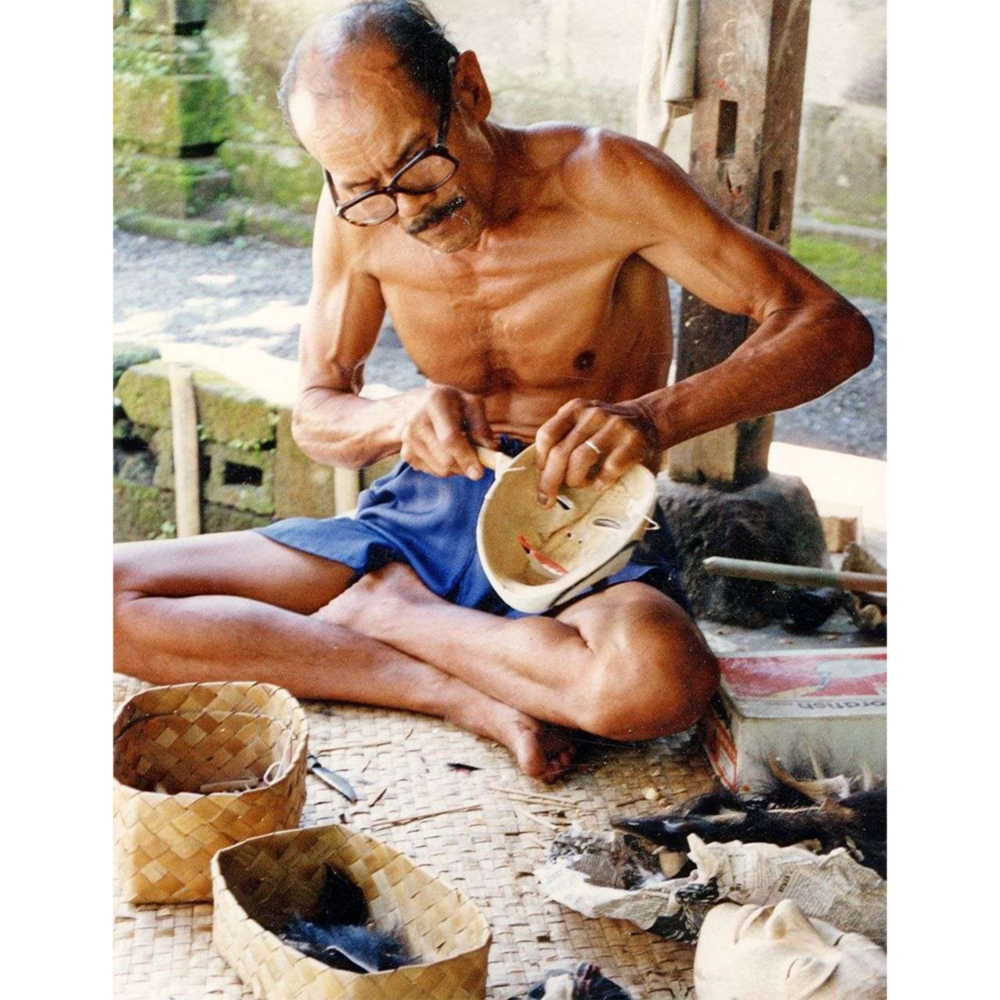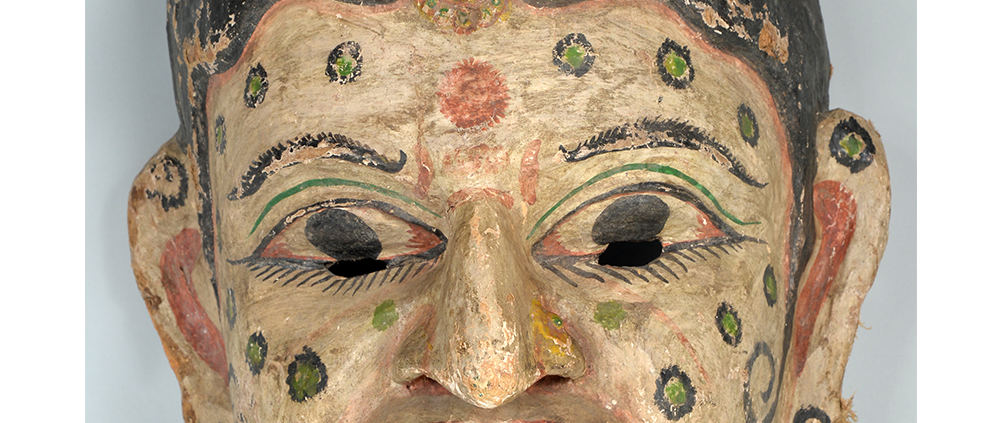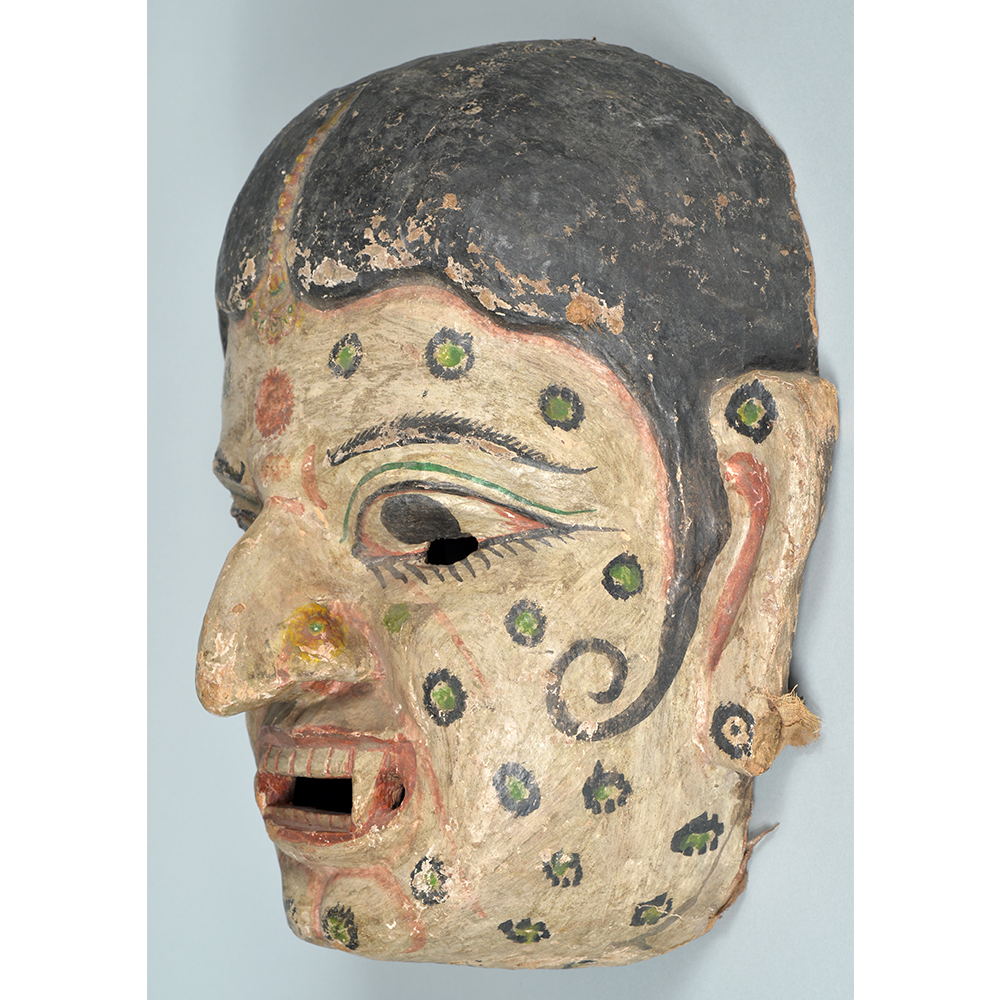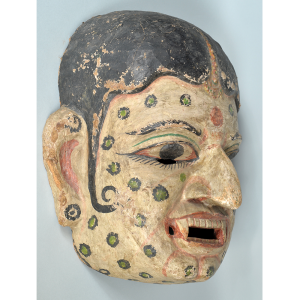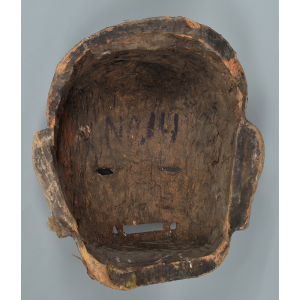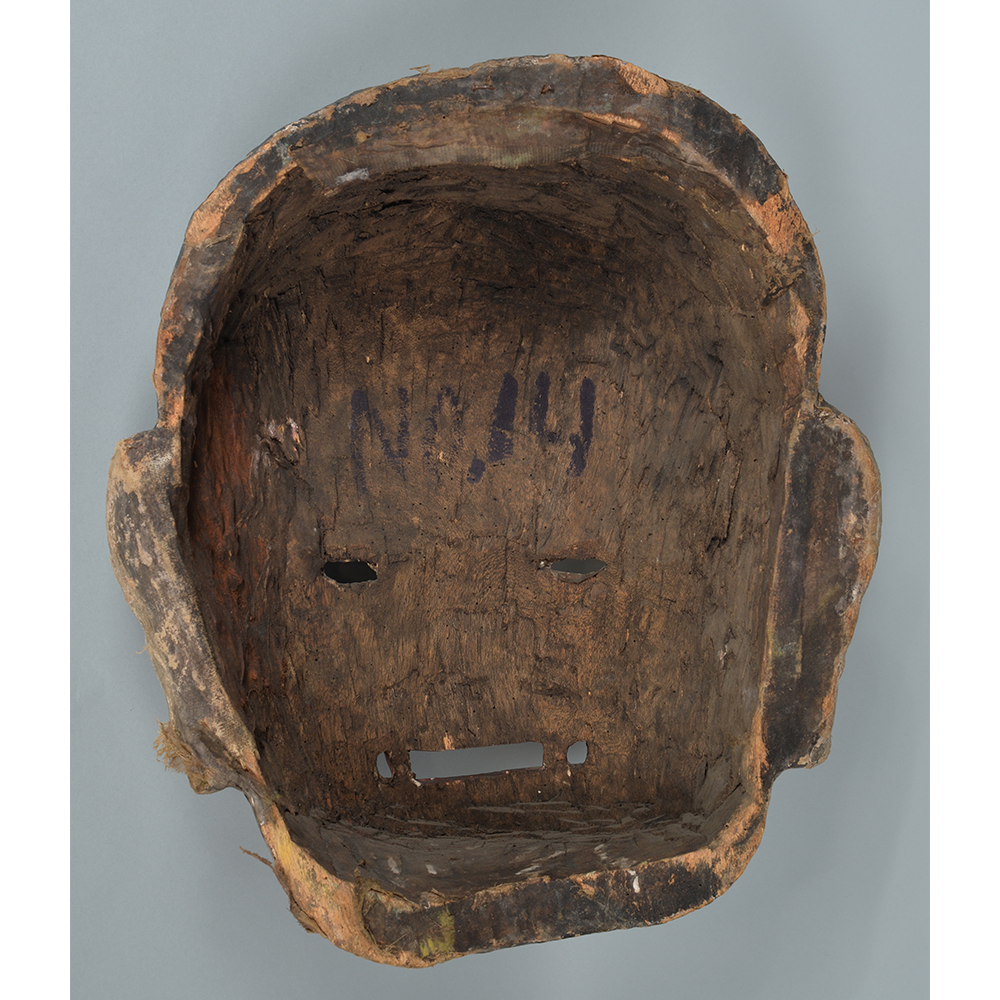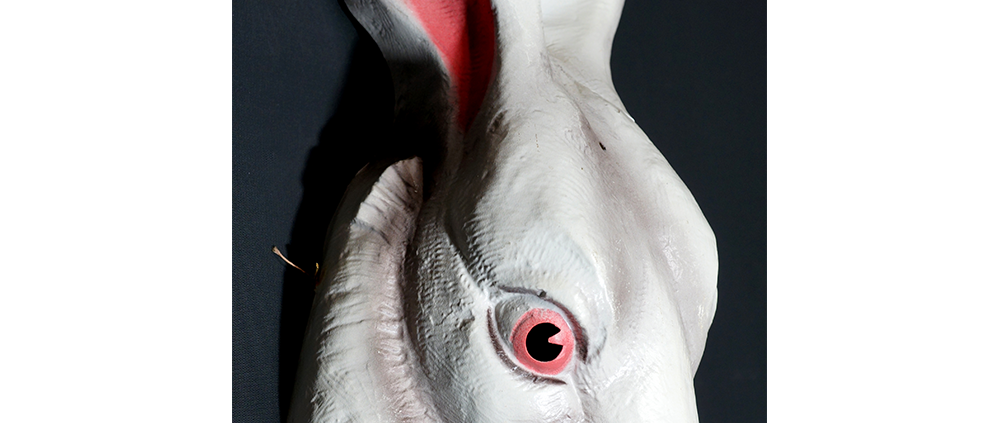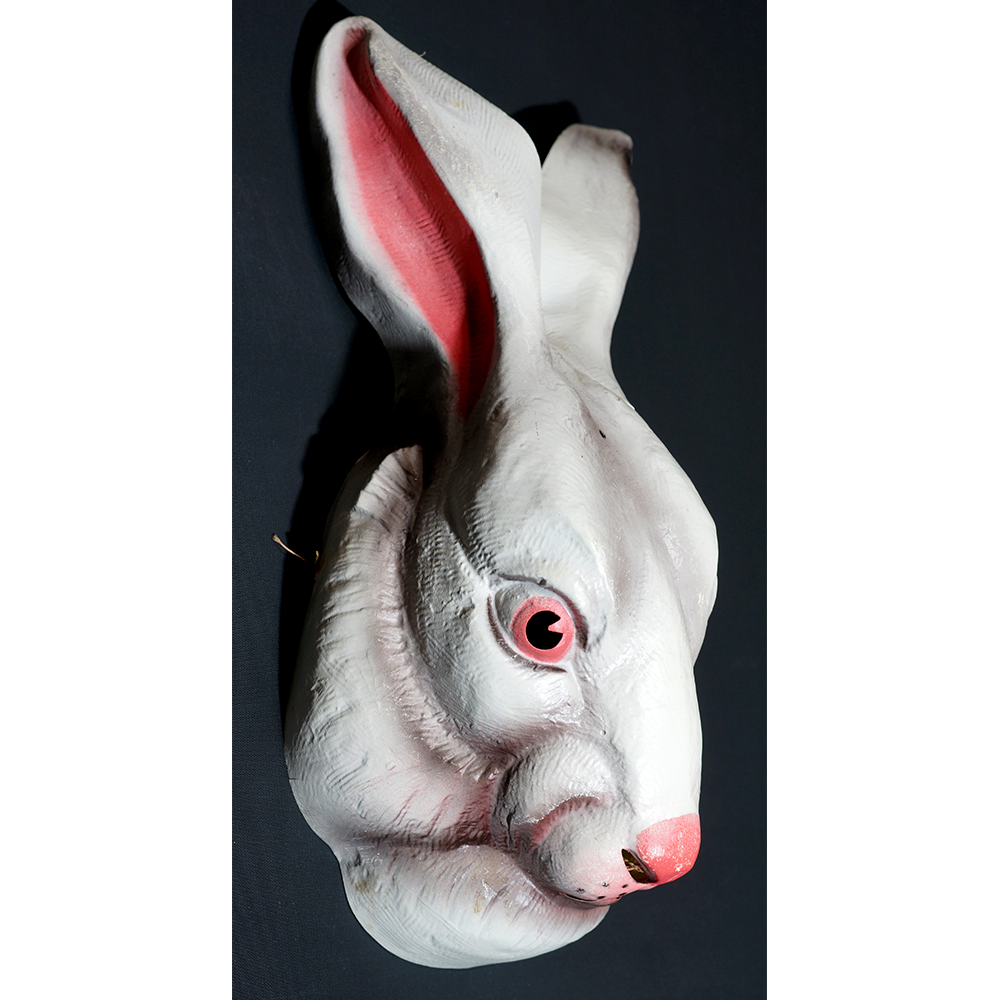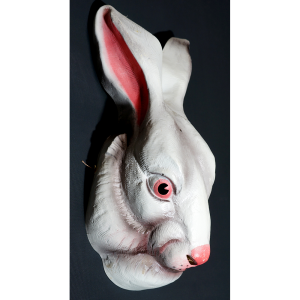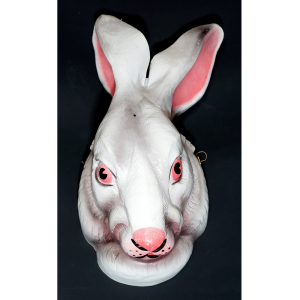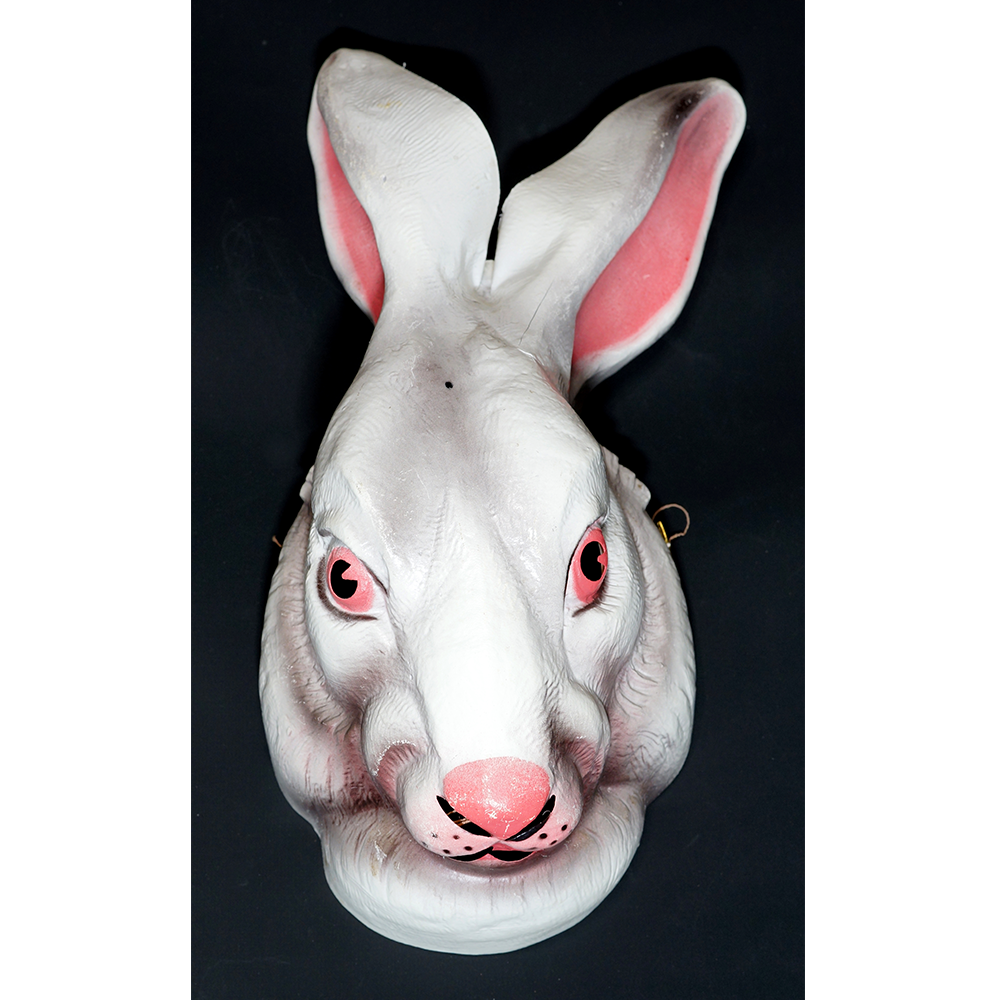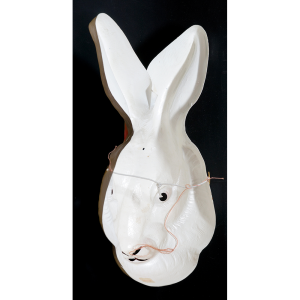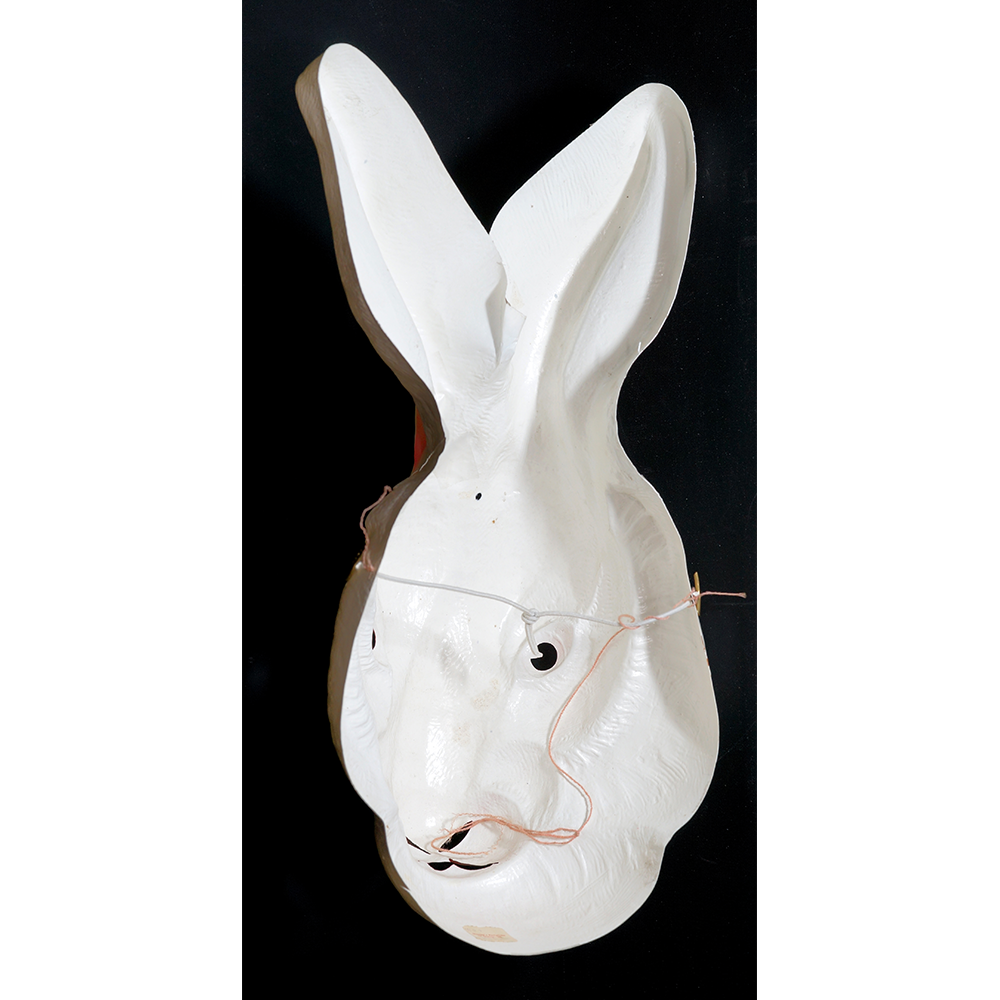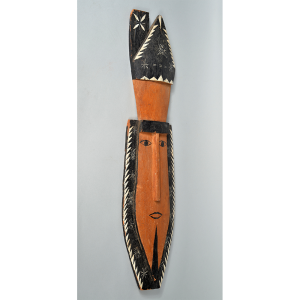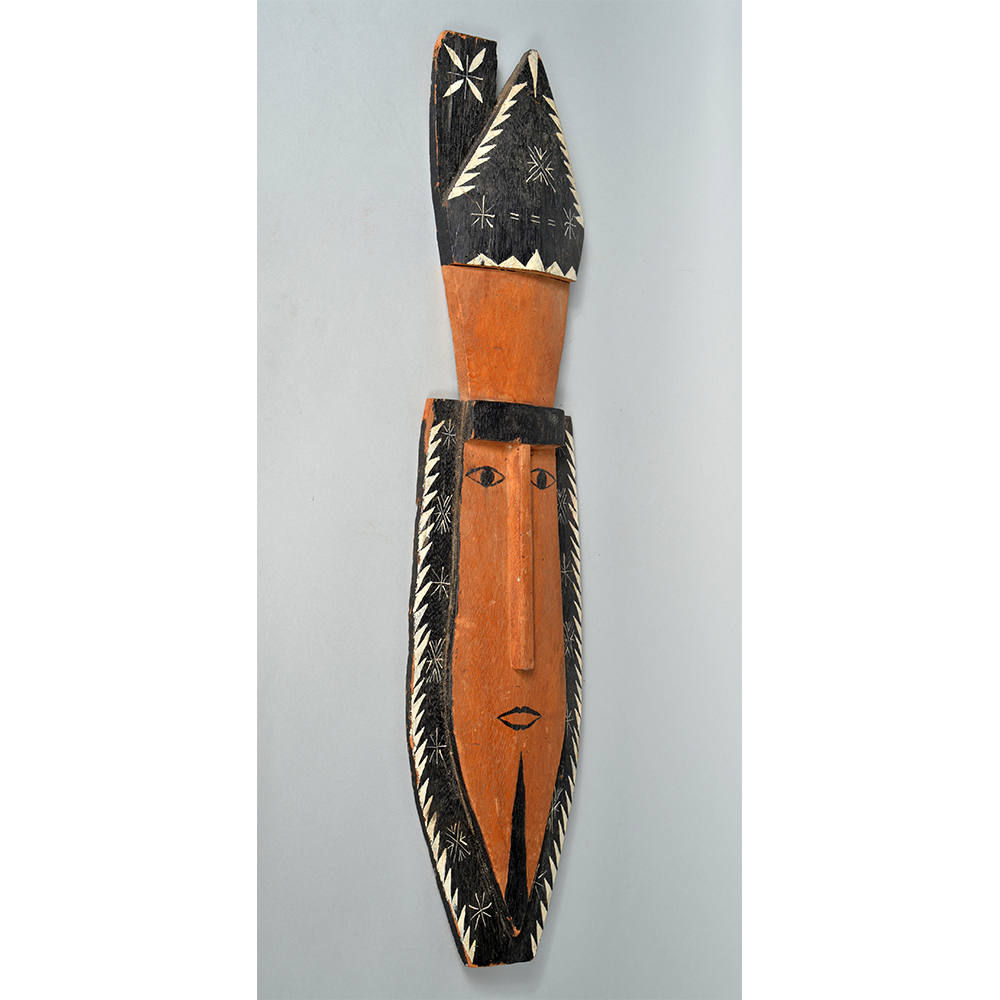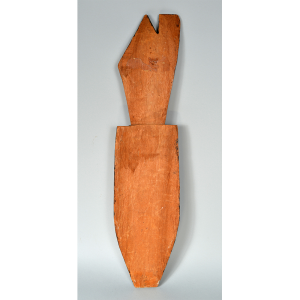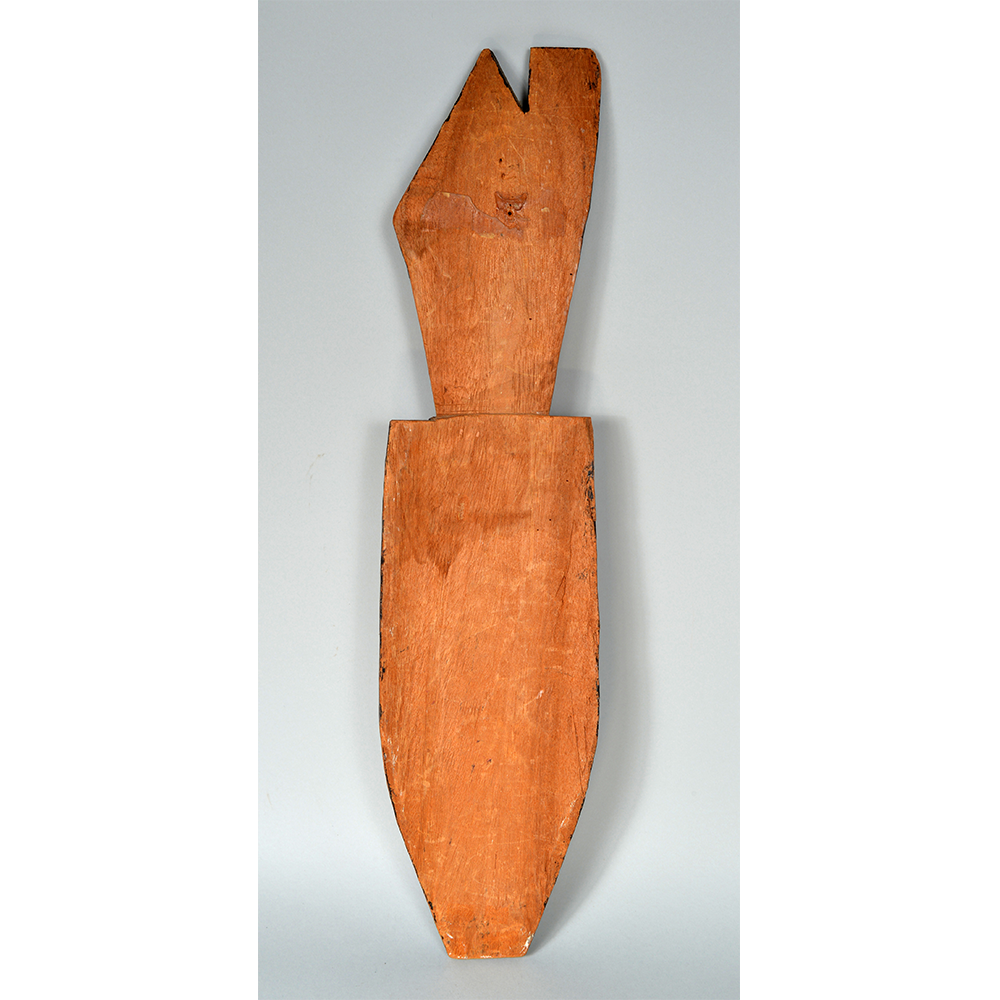TITLE: Mayo Fariseo
TYPE: face mask portion of a helmet mask
GENERAL REGION: Latin America
COUNTRY: Mexico
SUBREGION: Sinaloa
ETHNICITY: Mayo
DESCRIPTION: Judio (Fariseo) Mask
CATALOG ID: LAMX118
MAKER: Unknown maker in Mochicahui
CEREMONY: Holy Week (Fariseo Dance-Drama)
FUNCTION: celebration; purification; social control
AGE: ca. 1960s
MAIN MATERIAL: wood
OTHER MATERIALS: metal wire mesh; glue; pigment
The Yaqui and related Mayo people inhabit the desert in the Mexican state of Sonora and southern Arizona. Their religious beliefs are a syncretic version of traditional animist practices and Jesuitical Catholicism. The fariseos (Mayo) or chapayekas (Yaqui) are an important society in both communities and are mainly active during the three months surrounding Holy Week. The fariseos in theory represent Pharisees, or the Jews (judios) who supposedly condemned Jesus (it was actually the Romans), and are always represented by leather helmets with wood or painted faces.
Fariseos are organized by a society, with each celebration having a fariseo cabo (head Pharisee) who goes unmasked and organizes the dancers. To join the fariseo society, an applicant must be endorsed by a godfather (padrino) who is already a fariseo, and a godmother (padrina) who is a singer.
Fariseos usually begin dancing for several hours at the houses where idols of saints are kept, and then they come to dance in the town ramadas in the plaza, where the pasko’olas, deer dancer, and coyote dancers have been dancing.
In some village ceremonies, the fariseos, representing evil, repeatedly attack the church and are repelled by Christians throwing flowers. In others, unmasked fariseos represent the Roman persecutors of Christ bearing wooden swords and have battles with masked Christian caballeros (cavalry). Ultimately, the fariseos are defeated and convert to Christianity. In still other villages, the fariseos follow the procession of the icons of the church and mimic searching for Jesus. Dancing as a fariseo is believed to put the dancer in the good graces of Jesus. When the masked fariseos dance, the dancer holds a rosary with a cross in his mouth during the ceremony to ward off evil.
Normally, all fariseo masks except two are burned after Holy Week. More are made in preparation for the following year. The two that are preserved are kept to be buried with any member of the fariseo society who happens to die during that year. Once worn, the masks are considered sacred objects, because the fariseos pray while dancing.
During Holy Week, the fariseo society takes over most of the legal, police, and religious ceremonies of the Yaqui and Mayo villages. For example, working was traditionally prohibited on Ash Wednesday, and anyone caught working would be brought before the fariseo cabo and fined or, if he or she had no money, forced to drag a heavy mesquite cross along the procession route. At Lent, the fariseos go from house to house, collecting donations for the Fiesta de la Gloria and other religious celebrations.
This mask was formerly attached to a coyote pelt that was not properly cured and disintegrated over time.



